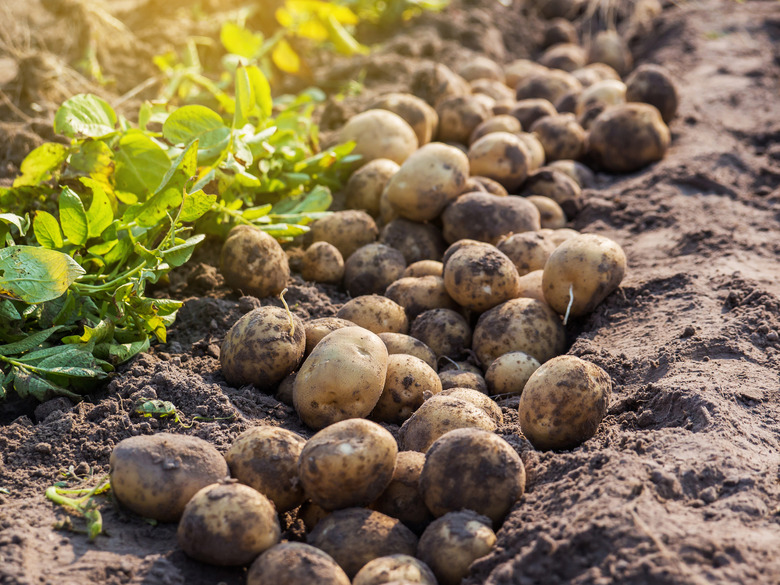The Similarities Between Starch & Glycogen
When you think of starch, you probably think first of food, and there's a good reason why. Many of your most important plant foods, like corn and potatoes, are rich in starch. In fact, starch is produced by all green plants, although some of them are richer with it than others. Animals like you, by contrast, produce glycogen instead.
TL;DR (Too Long; Didn't Read)
Both starch and glycogen are efficient ways for organisms to store carbohydrates — but plants store their carbs as starch while animals use glycogen.
Functions
Functions
Both starch and glycogen serve as energy storage. The plant produces starch from glucose to provide a supply for later use. Seeds, roots and tubers generally contain lots of extra starch to feed the seedling or plant that will sprout from them during its early growth. Likewise, when your food is digested, your liver stores some of the glucose from your meal as glycogen for later retrieval. Your muscle fibers also keep some glycogen handy as well.
Structure
Structure
Both starches and glycogen are polymers formed from sugar molecules called glucose. Each independent molecule of glucose has the formula C6H12O, and joining these subunits together in a certain way forms the long chains that make up glycogen and starch. There are two types of starch: amylose and amylopectin. Of these two, glycogen is more similar to amylopectin, since the sugar chains in glycogen and amylopectin are highly branched, while amylose is strictly linear.
Composition
Composition
Glucose can exist in multiple forms called isomers. In each of these, the molecular formula is the same, but the way the atoms are arranged is different. Starch and glycogen are both formed from alpha glucose, an isomer in which a hydroxy or -OH group on the first of the six carbons is on the opposite side of the ring from carbon 6. Another way to say this is that carbon 6 and the hydroxy group are trans to each other in the alpha glucose isomer.
Properties
Properties
Your digestive system can break up both starch and glycogen, so they make good sources of energy. They are both very different in this regard from cellulose. Like starch and glycogen, cellulose is a glucose polymer, but unlike starch and glycogen, it contains only beta glucose molecules. Consequently, each glucose molecule is "flipped" with respect to its neighbor, creating a long and highly rigid chain. While your digestive system can break down glycogen and starch, then, it can't do much with cellulose, which passes as fiber through your digestive system.
Cite This Article
MLA
Brennan, John. "The Similarities Between Starch & Glycogen" sciencing.com, https://www.sciencing.com/similarities-between-starch-glycogen-8408767/. 19 April 2018.
APA
Brennan, John. (2018, April 19). The Similarities Between Starch & Glycogen. sciencing.com. Retrieved from https://www.sciencing.com/similarities-between-starch-glycogen-8408767/
Chicago
Brennan, John. The Similarities Between Starch & Glycogen last modified March 24, 2022. https://www.sciencing.com/similarities-between-starch-glycogen-8408767/
